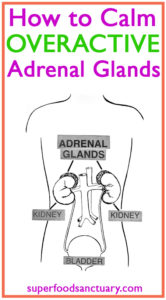

It prepares the body to fight back or flee, i.e., the fight or flight response. How to control an adrenaline rush?Īn adrenaline rush is a good thing when there is a real danger. These effects of the fight or flight response can last for up to 1 hour after an adrenaline rush. Shakiness or trembling of the arms and legs.Dilated pupils so that objects look bright or even unreal.

Changes in body temperature due to redistribution of blood.Increased ability to run fast or lift heavy objects.Hyperventilation or fast and shallow breathing.Heart racing or pounding sensation in the chest.Some of the effects of the fight or flight reaction during an adrenaline rush include: Slowing of digestion to allow muscles to use more blood.Changes in metabolism to ensure enough blood sugar and oxygen supply.Widening of the pupils (mydriasis) to allow more light to enter.Relaxation of the airways to increase oxygen supply.Redistribution of blood to the major muscle groups to get more oxygen to them.Expansion of the blood vessels in the muscles.Increased heart rate and high blood pressure.This leads to the following changes in the body: What happens to the body during an adrenaline rush?Īdrenaline triggers the sympathetic nervous system to prepare the body for a fight or flight reaction. It is called an adrenaline “rush” because it happens so quickly. The effects of adrenaline disappear once the potential threat has gone away. When adrenaline rushes into the blood, the body experiences the “fight or flight” response, also called the stress response. This occurs within a few seconds and produces immediate effects. What does it mean to have an adrenaline rush?Īn adrenaline rush occurs due to the rapid release of adrenaline into the bloodstream during a threatening situation. The hormone adrenaline helps to do this by increasing the heart rate, blood pressure, and breathing rate, enlarging the pupils of the eyes, redistributing blood flow to the muscles, and making changes in metabolism to ensure the brain gets enough glucose. The body produces adrenaline to prepare for dangerous or stressful situations. How does adrenaline affect the body?Īdrenaline is a hormone made by the adrenal glands, specifically the adrenal medulla. Please continue reading to understand what happens when the body releases adrenaline in response to an actual or perceived threat. It is commonly called the stress response, fight or flight response, or an “adrenaline rush.” These situations and activities can trigger the rapid release of a stress hormone called adrenaline (epinephrine). What do a frightening experience like a traffic accident, a stressful situation such as a job interview, a panic attack, and extreme sports like bungee jumping or riding a rollercoaster have in common? The answer is an adrenaline rush.


 0 kommentar(er)
0 kommentar(er)
